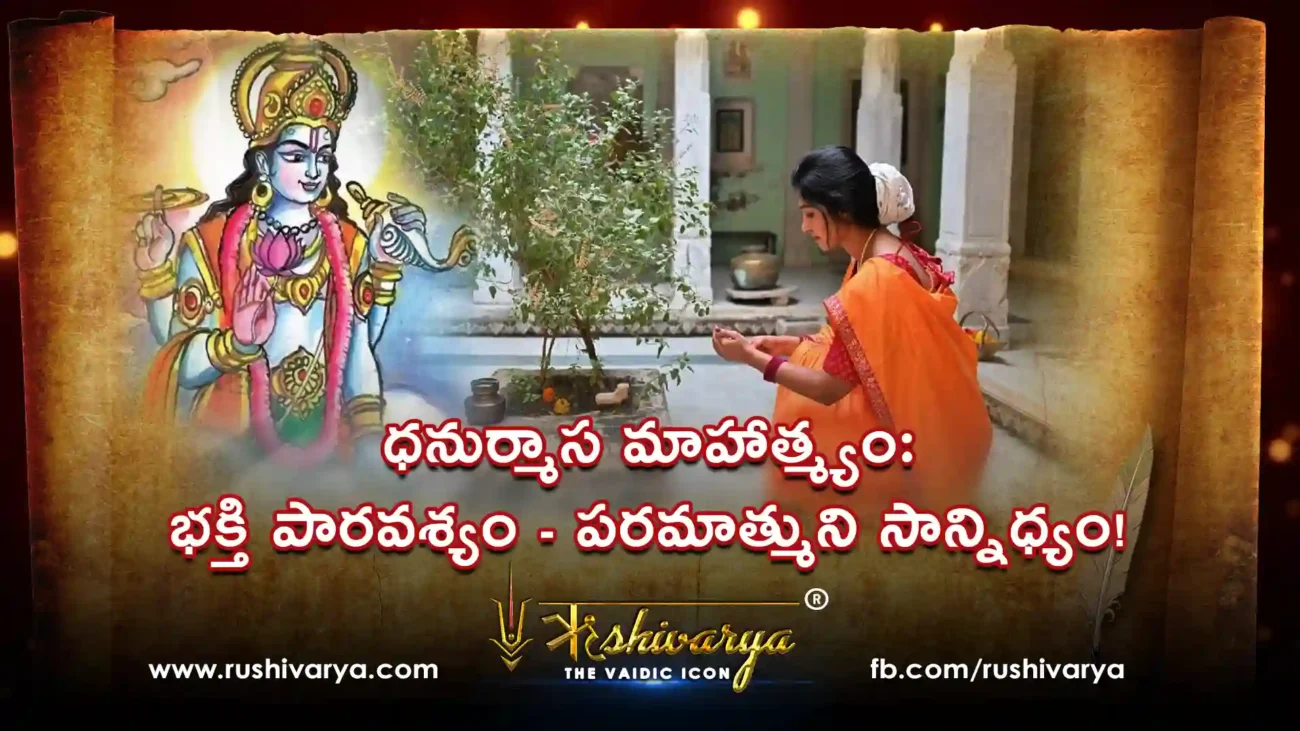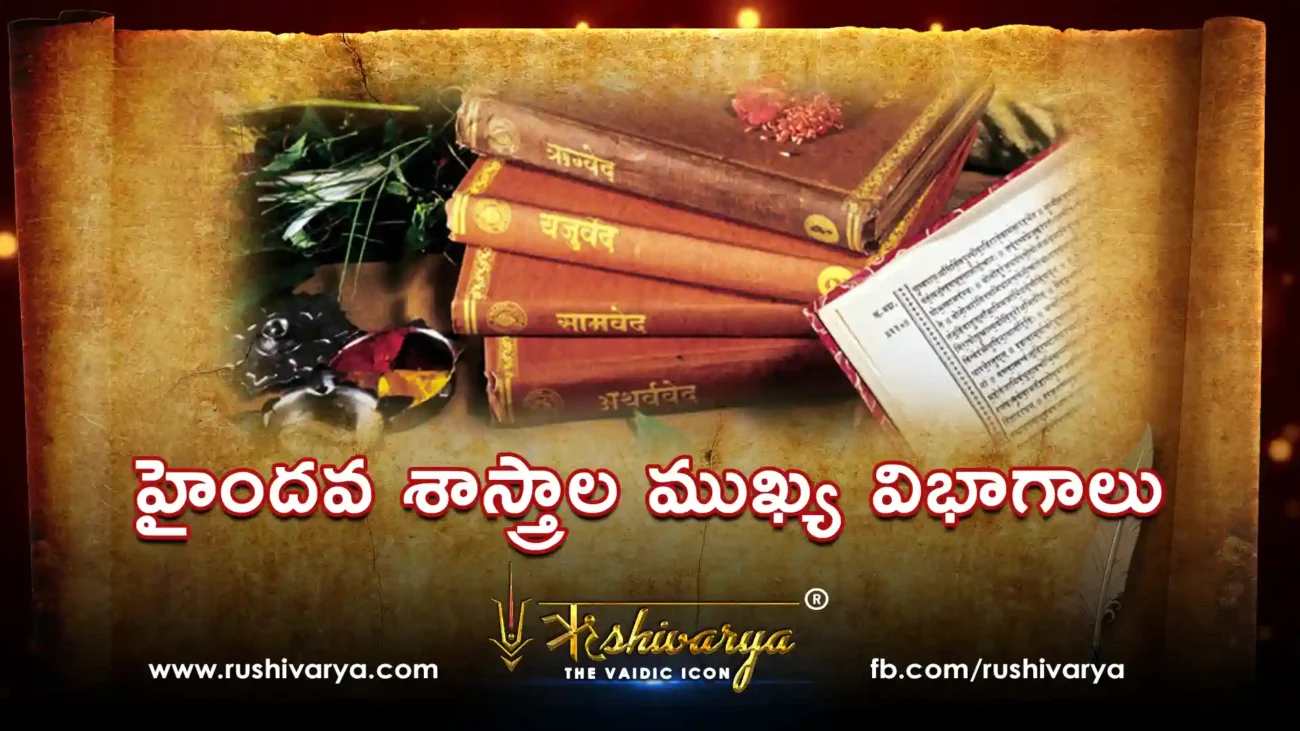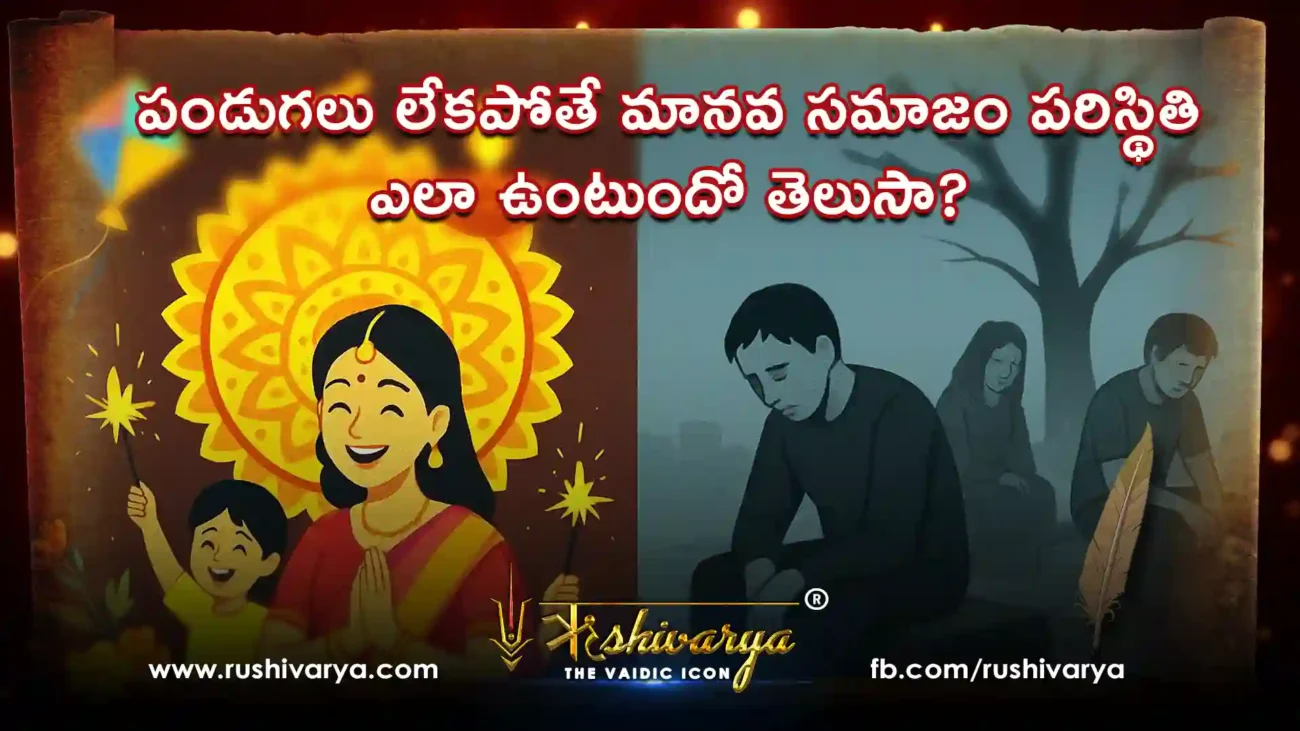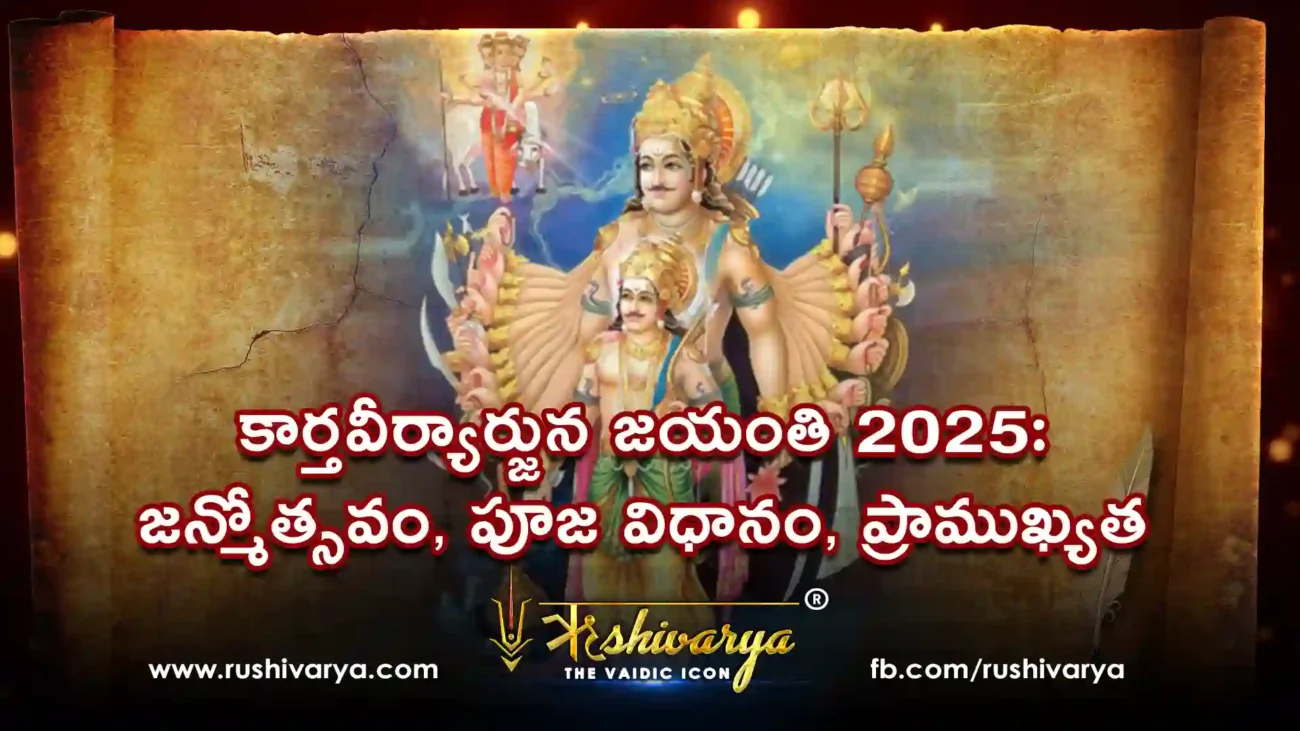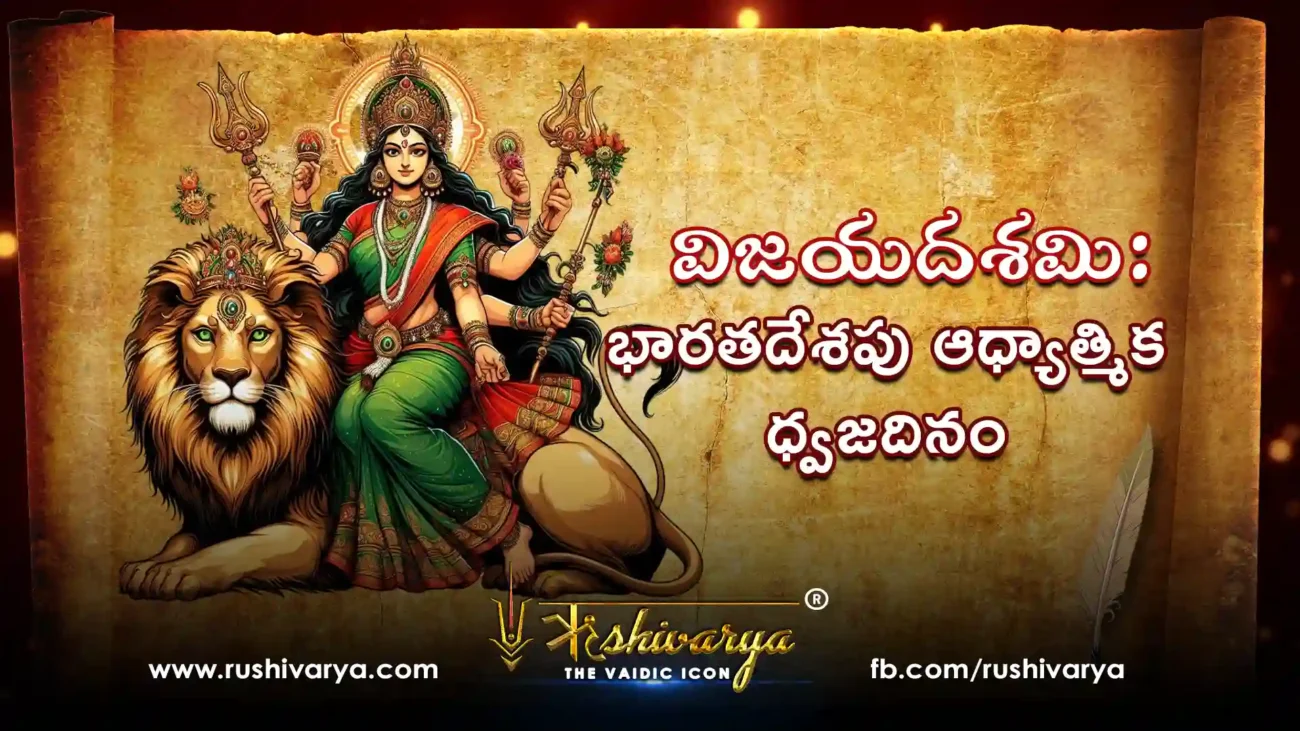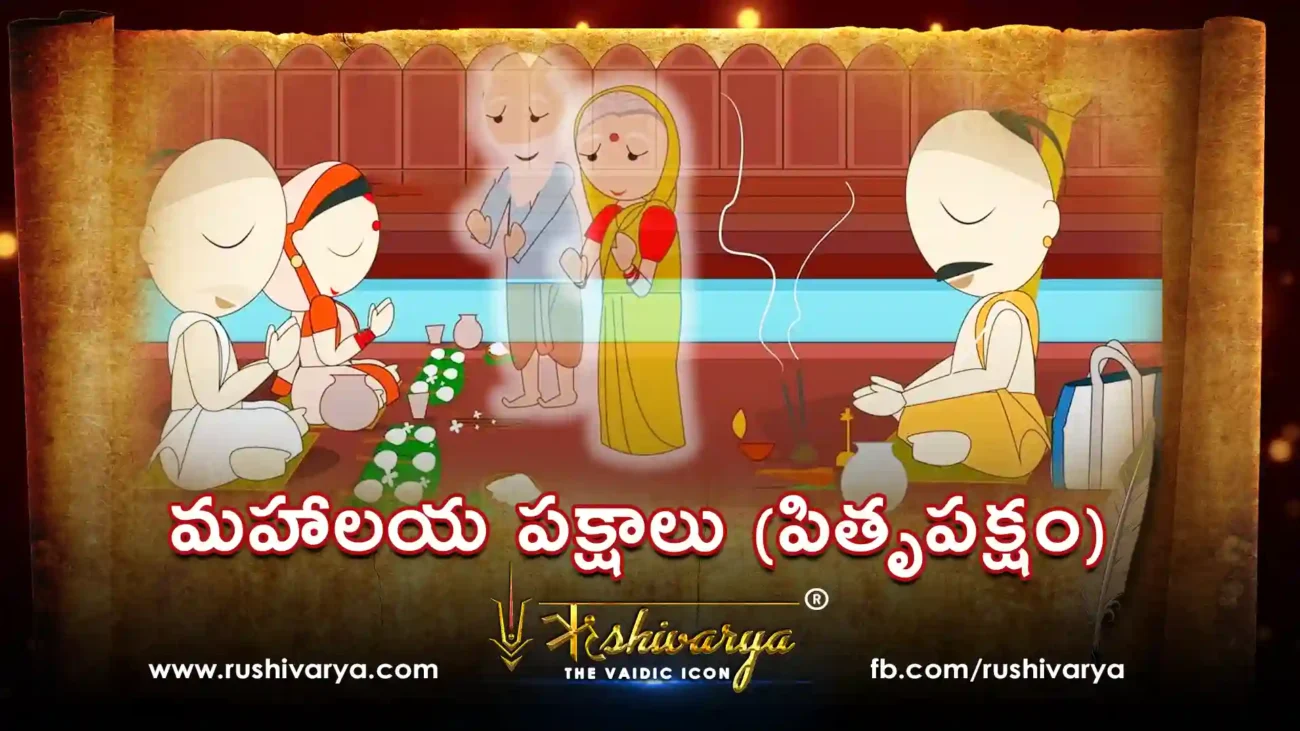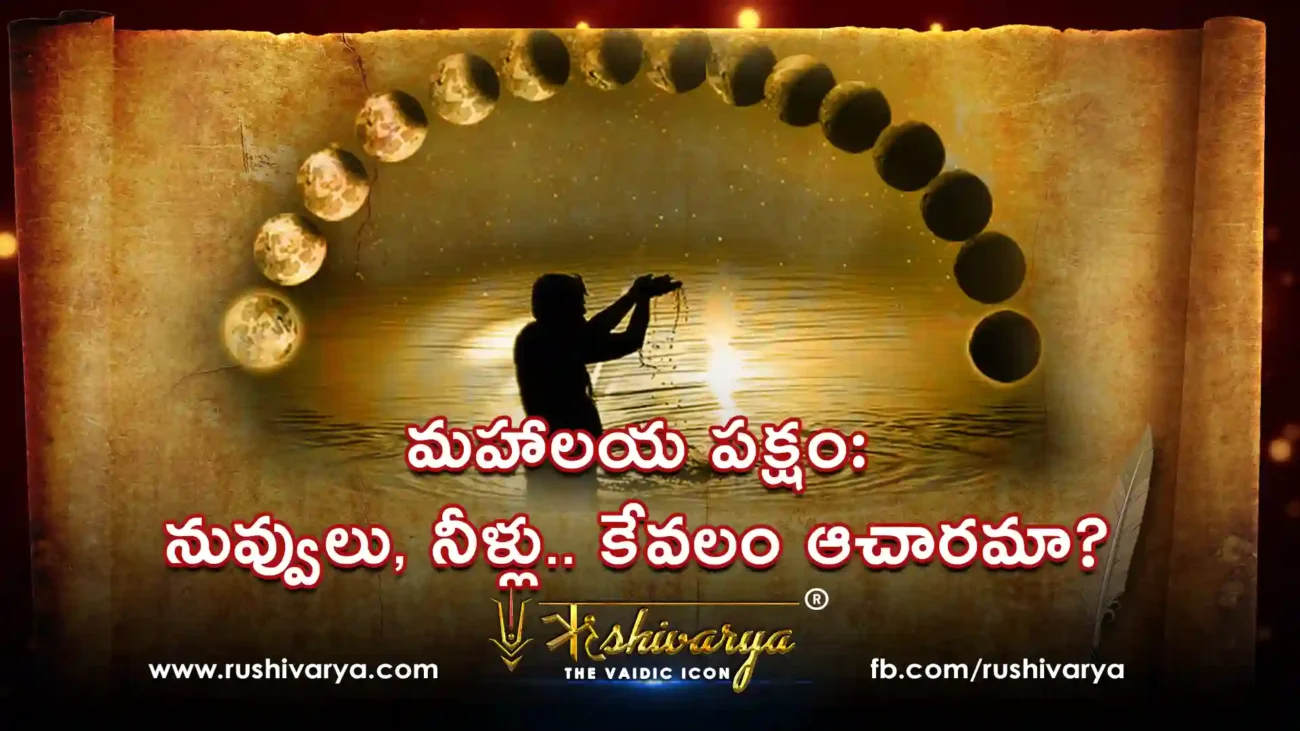
Blog
ధనుర్మాస మాహాత్మ్యం: భక్తి పారవశ్యం.. పరమాత్ముని సాన్నిధ్యం!
సనాతన ధర్మంలో కాలం భగవత్ స్వరూపం. అలాంటి కాలచక్రంలో ధనుర్మాసం అత్యంత సాత్వికమైనది, మోక్షదాయకమైనది. సూర్యుడు ధనురాశిలో ప్రవేశించడంతో ప్...
కలియుగంలో పెద్దలు చేసే దారుణాలు
సామాన్యంగా “కలియుగంలో పిల్లలు చెడ్డవాళ్లవుతారు” అని మాత్రమే మాట్లాడతారు. కానీ పురాణాలను లోతుగా చదివితే, కలియుగ పతనానికి పెద్ద కారణం పిల...
హైందవ శాస్త్రాల ముఖ్య విభాగాలు
హైందవ ధర్మంలో “శాస్త్రాలు” (Śāstra) అనేవి చాలా విస్తారమైనవి. వీటికి ఖచ్చితమైన సంఖ్యను నిర్ణయించడం సాధ్యం కాదు, ఎందుకంటే వేలాది సంవత్సరా...
పండుగలు లేకపోతే మానవ సమాజం పరిస్థితి ఎలా ఉంటుందో తెలుసా?
మనిషి జీవితం కేవలం ఆహారం, నిద్ర, పని అనే ఈ చక్రంలో తిరుగుతుంటే అది యాంత్రిక జీవితం అయిపోతుంది. కానీ మనిషి యంత్రం కాదు — భావోద్వేగాలతో, ...
క్షీరాబ్ది ద్వాదశి 2025: తులసి కళ్యాణం వెనుక పాల సముద్ర మథన రహస్యం!
నమస్కారం!కార్తీక మాసంలో వచ్చే పండుగలు, పర్వదినాల్లో అత్యంత విశిష్టమైనది క్షీరాబ్ది ద్వాదశి. సకల శుభాలను, అష్టైశ్వర్యాలను ప్రసాదించే ఈ...
కార్తవీర్యార్జున జయంతి 2025: జన్మోత్సవం, పూజ విధానం, ప్రాముఖ్యత
కార్తవీర్యార్జున జయంతి 2025 ప్రత్యేకత, పూజా విధానం, వ్రత కథ, మరియు ఈ దినోత్సవం యొక్క ఆధ్యాత్మిక ప్రాముఖ్యత గురించి తెలుసుకోండి. శ్రీ కా...
Nagula Chavithi 2025 – Date, Puja Vidhi, Significance & Celebration Rituals
In 2025, Celebrate Nagula Chavithi with fervor and custom. Find out how to perform Nagula Chavithi vratam at home, as well as the preci...
విజయదశమి: భారతదేశపు అధ్యాత్మిక ధ్వజదినం
దసరా… కేవలం ఒక పండుగ కాదు, అది భారతదేశం యొక్క అధ్యాత్మిక ధ్వజదినం. ధ్వజదినం అంటే విజయానికి గుర్తుగా ఎగురవేసే జెండా. దసరా పండుగను దేశం న...
మహాలయ పక్షాలు (పితృపక్షం)
మహాలయ పక్షం: పితృ దేవతల పునరాగమనం, వారి ఆశీస్సుల పర్వంపవిత్రమైన మహాలయ పక్షాలు ప్రారంభం అవుతున్నాయి. భాద్రపద బహుళ పాడ్యమి నుండి భాద్రపద ...
మహాలయ పక్షం: నువ్వులు, నీళ్లు.. కేవలం ఆచారమా? అద్భుతమైన శాస్త్రీయ వ్యవస్థా?
మనం ప్రస్తుతం పవిత్రమైన మహాలయ పక్షాలలో ఉన్నాం. ఈ సమయంలో చాలా మందికి కలిగే సందేహాలు, పితృకార్యాల వెనుక ఉన్న లోతైన అర్థం గురించి కొన్ని ఆ...

